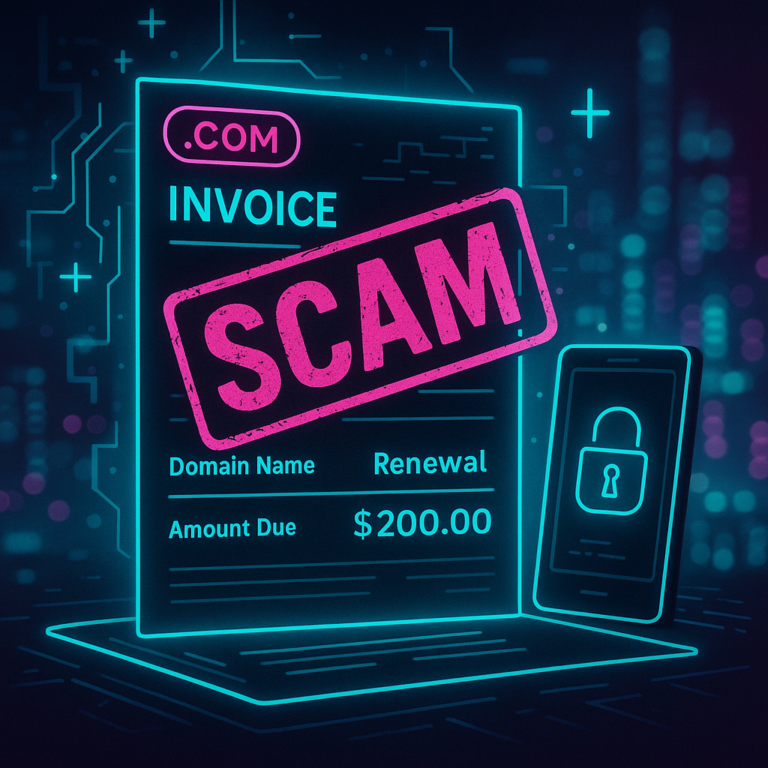When I start working with a client, one of the most common problems I see is something we call “The Half-Built Bridge.” It’s what happens when, even when started with the best of intentions, good ideas don’t make it all the way to completion.
After implementing hundreds of successful strategies for companies in e-commerce, business to business, and business to consumer lead generation, we’ve identified 3 key pieces that every effective business growth campaign has to have. When something goes wrong, it’s because one of these pieces is missing:

A Documented Strategy: You need a plan for how customers will develop a relationship with your company. Good relationships don’t happen by accident, and unless you’ve charted a course for your customers to follow, you won’t know what the next step for them should be.
Actionable Metrics: We’ve all heard that “what gets measured, gets managed.” And while that’s true, it’s even more important to understand that what you’re measuring should be instructive. There’s no benefit to collecting data just for the sake of collecting data. It has to give us clarity on our next steps.
Effective Tools & Tactics: As you implement your strategy, it’s important to understand the tools you have at your disposal for generating awareness, collecting and converting leads, measuring results, and how all of these should be enacted so that they work well together.
Even for businesses that have one or two of these in place, that missing component can mean the difference between an effective campaign and one that falls flat on its face.
One question we get all the time (and that I struggled with myself as a local business owner until I developed this framework) is “with so much I could be doing, where should I start?” All too often, it seems like one project can’t be completed until another step has been done first, and it can be difficult to pinpoint where the process begins.
This framework is the answer to that question:

Step 1: Identify the customer you’re trying to reach
Every effective marketing campaign starts with an understanding of the type of person you’re trying to reach. It isn’t just understanding them demographically (women in the Midwest between the ages of 35 and 55, with a household income over $100k), it’s deploying empathy to understand exactly what their life looks like:
- What they struggle with on a daily basis
- What they dream about
- What they’re hopeful for
- What’s frustrating for them
- What podcasts they listen to
- Whose books they read
- Where they congregate
- And on and on…
With new clients, we go through the process of uncovering this information by reading reviews of competing products, joining Facebook Groups that their ideal customers belong to so that we can understand how they speak and what’s important to them, and often interviewing them directly.
It’s only when you have this level of understanding of your customer that you can really start to present them with solutions that will make their lives better.
The tool we use for that research is the Customer Avatar Canvas. You can download it here:


Step 2: Build an initial offer that solves a problem for them
Once you’ve identified your ideal customer, creating offers that solve their problems and are contextualized to their specific needs is your next step. Even if you serve multiple types of customers who buy the exact same product, they’re likely buying it for different reasons.
Your messaging needs to communicate that you understand how that product will fit differently into each customer’s life. Your offer should be clear, direct, and something that your customers have the ability to understand as well as directly accept or reject. Especially with clients in the consulting or coaching industry, I regularly see offers that are vague and confusing, and customers don’t take action when they’re confused.
For instance, there’s a big difference between “One month of coaching” as an offer vs. “60-minute weekly calls via Zoom along with weekly assignments and accountability via our business development framework.” One is clear, the other is vague. I may not want the second option, but I at least understand what I’m buying. That’s critical when you’re putting your offer together.
Think of it this way – if you couldn’t put a barcode on your offer and scan it in the self-checkout line at the grocery store, it’s probably not clear enough.
Step 3: Document what sets you apart from the competition
Let’s get this out of the way first: you’ve probably got a great product or service. Maybe even the best one in your industry. But the fact of the matter is this: your customers can get what you sell from more than just you. In fact, if you’re the only one selling what you’re selling, one of two things is true:
- You’re about to be a billionaire, OR…
- No one wants what you’re selling.
I’ll let you guess which one is more likely.
For example, I can set up an ecommerce business today that sells ballet shoes for your pet owl. No one is currently doing that. But it isn’t going to make me rich – because no one is asking for it.
You aren’t just competing against the people who sell similar products, either. You’re competing against people who sell similar outcomes. That’s why it’s so important to articulate the transformation you take your customers through – what does life look like right now, and what does it look like once your customers do business with you? How does life get better on the other side of a relationship with your company?
To illustrate, if you’re a counselor or therapist, you aren’t selling the 60-minute sessions on your couch. You’re selling the freedom from anxiety, depression, or whatever struggles your patients are facing. Where else might they turn for that outcome?
If that’s your mindset, you realize that as a therapist, you aren’t just convincing your customers that they should choose you over all the other therapists, you’re convincing them that it’d be better to solve their problems with you than at the liquor store or with some fancy mental health supplement.
Step 4: Optimize your website and landing pages for conversion
Most people come to us with a goal of driving more traffic and increasing the number of leads and sales they get through their website. But it’s important to remember that simply driving traffic is not a recipe for success.
If your site isn’t built to optimize conversions, more traffic won’t help. That would be the equivalent of trying to fill a leaky bucket by pouring more water into it. You’ve got to make sure that your site has clear calls to action, a clear statement of value (how what you do helps make your customers’ lives easier), and examples of how you’ve helped other people just like them achieve similar results in the past.
If your messaging is unclear or you don’t give site visitors an obvious next step and a reason they should take it, you won’t get the results you’re after, no matter how much traffic you generate.
Need a little help deciding what the best layout for your site is? We’ve got a helpful infographic that breaks down the important sections any effective website should include.
Step 5: Implement a repeatable sales process
Once a potential customer lands on your website, there has to be something for them to do. We like to tell clients that your website should be your best employee. It works 24 hours a day, never goes off-script, and gives your customers all the information they need about why they should do business with you.
But for many companies, their website is simply a glorified arts and crafts project. It’s pretty, but it doesn’t do much. Whether you’re running an e-commerce store and you want to generate sales right away or your business is focused more on lead generation and scheduling calls or appointments, you’ve got to make that process frictionless, obvious, and immediately beneficial to your customer.
Frictionless means that your customer or potential customer shouldn’t have to jump through a bunch of hoops or any complicated processes to move forward. The less you ask them to do, and the more direct the path is, the better.
Obvious means that they shouldn’t have to go hunting for the next step. Imagine if you were walking through Target and couldn’t find the checkout lines because they’d hidden them under a hatch in the floor in the changing rooms. How likely would you be to buy something? Make it immediately apparent where people should go with bold call-to-action buttons and forms.
Beneficial means that there should be some reason that customers take the next step. They don’t want to book a call with you just for the sake of booking a call. What will they get? How will it make their life better right away? Give them a quick win so that they’re enticed to move forward. This is another reason why lead magnets are so effective – they give customers a quick win in exchange for a little bit of contact information.
Step 6: Decide on the most appropriate traffic channel(s)
When you have a sales process in place that starts on a website or landing page that’s built for conversion, you’re ready to drive traffic. But all traffic channels aren’t created equal. Some businesses are much more suited to intent-based marketing channels, while others are more suited to interruption-based channels.
What’s the difference?
Imagine that you had a leaky faucet at your house. What would you do? There are a lot of options. Most people would pull up Google or YouTube and search for something like “how to fix a leaky faucet” or “plumber near me.” These searches reflect intent. They’re trying to accomplish a specific thing, and they need it done within a certain timeline. Using techniques like pay-per-click advertising and SEO, we can meet them with the solutions they’re looking for.
Other times, you might be scrolling through Facebook, Instagram, or TikTok for entertainment and see an ad for a product or service that seems like it was built just for you. That’s the power of interruption-based marketing. You were on that channel for something else, and because of who you are, you were shown an ad for a product that is relevant to your life.
Most businesses could benefit from both interruption-based as well as intent-based marketing, but one of them is likely much more relevant. Another important aspect of reaching your target customers is the concept of retargeting. That means that if a customer reaches your site via any channel, you can show them ads for the next 30, 60, or 90 days (sometimes even longer!) on channels like Facebook, YouTube, LinkedIn, and Instagram as long as you have a small piece of code called a tracking pixel installed on your site.
Step 7: Deliver service that delights your customers
If your customers aren’t happy doing business with you and you don’t deliver a good product or service, the best marketing in the world will only put you out of business faster.
Delivering service that goes above and beyond customer expectations can mean the difference between a customer and a lifelong fan. If your customers are happy, they’re more likely to purchase again, more likely to stick around longer, and more likely to tell people about you.
Delivering an amazing experience for your customers means responding to them quickly, communicating clearly, and even doing things that don’t necessarily scale – handwritten notes, thoughtful gifts, remembering their names, and serving them generously.
If you build systems that create amazing customer experiences, you aren’t always fighting to find new customers – you can be more focused on serving the ones you already have, and it’s much easier to keep an existing customer than it is to create a new one.
Step 8: Craft an upgrade path that keeps customers engaged
As long as you’re delivering service to your customers at a high level, there will always be a certain percentage of customers that are ready to upgrade to higher levels of service and want more of what you do. It’s your obligation to provide that pathway to them.
Maybe you can give them the results they’re after more quickly, with less effort, or with some one-on-one support or access that they wouldn’t otherwise enjoy. If you sell physical products, maybe an upgrade means upsells or cross-sells.
Upsells are higher level versions of a product or service that they already have or additional components to improve the core product or service they’re already enjoying. Think about adding personal training to a gym membership. That’s a perfect example of an upsell.
Cross-sells are products that support the use of a product or service you already sell. For instance, if a guitar store also sells lessons, cases, cleaning kits, strings, and amplifiers, those would all be classified as cross-sells.
Step 9: Build a system for collecting reviews, testimonials and referrals
If customers have been in your ecosystem for the right amount of time and they’ve taken advantage of a number of your services, it’s likely because they enjoy working with you. That’s a perfect time to ask them for a review, a testimonial, or a referral.
Most people only leave reviews when they’re disappointed or upset, but your happy customers are more than willing to leave this kind of feedback as well – they likely just need to be asked! Give people an easy path to leaving reviews on platforms like Google, Facebook, Yelp, and other community databases and then take advantage of that feedback by turning it into media.
Ask people to record videos sharing their experience working with you and use those videos as ads on social media as well as featured pieces on your websites and landing pages. Send them out via email as well, because reviews from current customers are one of the strongest ways to build trust with new customers.
So what do we do?
This framework provides a step-by-step process that you can use to build an effective marketing plan. But without a strategy in place, starting to build specific tactics can end up getting you even more lost.
The most important first step you can take is to lay out each of these steps, one at a time, and build a complete pathway that you can then implement. It’s the same as drawing a blueprint before you build a house.
If you need some support in creating a blueprint that will make your marketing and business growth simple, straightforward, and effective, we’d love to talk. Simply book a call with our Director of Strategy and we can share ideas for how to reach your desired audience with a message that will resonate and an offer that they’ll be excited to buy.










